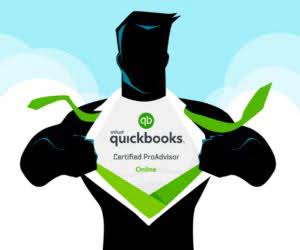
Both determine how much a company spent to produce their sold goods or services. No matter how COGS is recorded, keep regular records on your COGS calculations. The average cost method, or weighted-average method, does not take into consideration price inflation or deflation. The average cost method stabilizes the item’s cost from the year. Typically, once you determine cost of goods sold, it’ll help you determine how much you owe in taxes at the end of the reporting period—usually 12 months.
Are Salaries Included in COGS?
As we continue to calibrate and hone our predictive analytic tools, advancing our investment pieces on each property in our portfolio, we may be more active on dispositions than in the past. We continue to optimize our portfolio composition and investment returns cost of goods sold while broadening our use of organically generated capital to finance growth. This is different from a higher long-term cost of capital, which applies a growth premium to our cost of equity to account for the long-term return requirements for our investors.
Ask Any Financial Question

Accurate records can give you peace of mind that you are on track come reporting time. Cost of Goods Sold (COGS) is the direct cost of a product to a distributor, manufacturer, or retailer. Sales revenue minus cost of goods sold is a business’s gross profit. The cost of goods sold is considered an expense in accounting.
Indirect Costs
You can find your cost of goods sold on your business income statement. An income statement details your company’s profits or losses over a period of time, and is one of the main financial statements. COGS includes everything from the purchase price of the raw material to the expenses of transforming it into a product and packaging it, to the freight charges paid to have it delivered to store shelves. It also includes the cost of paying the workers who make the product. In some circles, the cost of goods sold is also known as cost of revenue or cost of sales.
- So, Joshua, we’ve been very clear with the market that the credit investment side of the business is an addendum to what we are offering our clients.
- Throughout the year, the business purchased $50,000 worth of merchandise.
- The company’s actual future results may differ significantly from the matters discussed in any forward-looking statements.
- Impact on your credit may vary, as credit scores are independently determined by credit bureaus based on a number of factors including the financial decisions you make with other financial services organizations.
- While they might use those items in the office during appointments, reselling that same equipment for patients to use at home plays a different role in cost calculations.
- I was intrigued by your comments on the investing landscape today.
Cost of Goods Sold vs. Operating Expenses
This ratio shows how much of the total sales can cover the cost of goods purchased or produced to be sold during a time period. A price higher than that point will start paying off the different overhead costs and operating expenses until it eventually starts making a profit. Investors looking through a company’s financial statements can spot unscrupulous inventory accounting by checking for inventory buildup, such as inventory rising faster than revenue or total assets reported. Any additional productions or purchases made by a manufacturing or retail company are added to the beginning inventory. At the end of the year, the products that were not sold are subtracted from the sum of beginning inventory and additional purchases. The final number derived from the calculation is the cost of goods sold for the year.

I don’t necessarily agree with the last comment that you made in your question that John. But I’ll go ahead and answer this question around investment grade representing 10% of our investments in the second quarter. We’ve always been very clear with the market when we’ve said that we don’t target investment grade as a criteria for investment.
The final inventory will then be counted at the end of an accounting period. The COGS is identified with the last purchased inventories and moves upwards to the beginning inventories until the required number of items sold is fulfilled. Additionally, the ending inventory is inflated because the latest inventory was purchased at higher prices. The FIFO method presupposes that the first goods purchased are also the first goods sold.


No matter how COGS is recorded, keep regular records of your COGS calculations. Like most business expenses, records can help you prove your calculations are accurate in case of an audit. Plus, your accountant will appreciate detailed records come tax time. The average cost method, or weighted-average method, doesn’t take into consideration price inflation or deflation. Instead, the average price of stocked items, regardless of purchase date, is used to value sold items. Items are then less likely to be influenced by price surges or extreme costs.
- Both the assets that we currently either own 100% or partially owned have continued to perform, and we — then the leases that were structured were, in our view, very favorable leases.
- You need to price the product higher than $10 to turn a profit.
- For information pertaining to the registration status of 11 Financial, please contact the state securities regulators for those states in which 11 Financial maintains a registration filing.
- That is why managers and business owners must pay close attention to bringing down their costs as low as possible, especially in low-margin industries like grocery stores.
Would you prefer to work with a financial professional remotely or in-person?
To meet these problems, accountants often use the gross profit method for estimating the cost of a company’s ending inventory. The LIFO method will have the opposite effect as FIFO during times of inflation. Items made last cost more than the first items made, because inflation causes prices to increase over time. The LIFO method assumes higher cost items (items made last) sell first. Thus, the business’s cost of goods sold calculation will be higher because the products cost more to make. LIFO also assumes a lower profit margin on sold items and a lower net income for inventory.
This method will tend to inflate the size of the cost of sales since the more recent goods are typically purchased at a higher price. This would lower net income and make the company pay fewer taxes on its profits. That is because it can sometimes be challenging to differentiate between the direct costs that go into the production or the purchase of merchandise and the indirect costs, such as several overhead costs. Examples of pure service companies include accounting firms, law offices, real estate appraisers, business consultants, and professional dancers, among others. Even though all of these industries have business expenses and normally spend money to provide their services, they do not list COGS. Instead, they have what is called “cost of services,” which does not count towards a COGS deduction.




